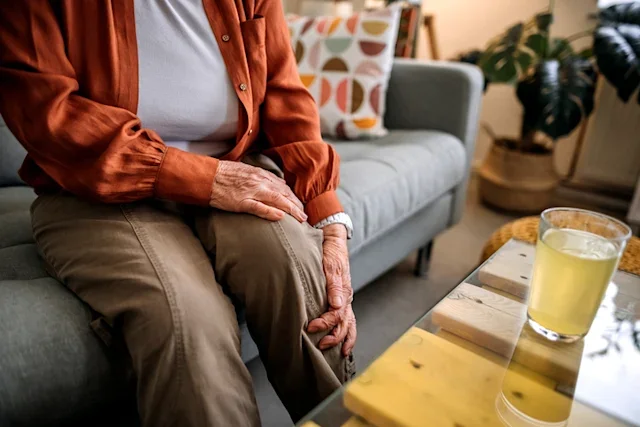Key takeaways:
Diabetic ketoacidosis (DKA) is a serious complication of diabetes that can be life-threatening.
Common causes for DKA include illness, infection, stress, diet changes, certain medications, and drug use.
Without emergency medical treatment, DKA can be fatal.
Diabetic ketoacidosis (DKA) is a serious complication of diabetes that can be life-threatening. If you or a loved one has diabetes, it’s important to know the signs and symptoms of DKA and when to get medical care. Knowing the common causes of DKA can also help you know what to do to prevent it.
What is DKA?
Diabetic ketoacidosis (DKA) is a serious complication of diabetes that happens when blood glucose levels are dangerously high. If you have diabetes and your body doesn’t have enough insulin, the glucose (sugar) in your blood can’t get into your cells. Glucose is your body’s main source of energy. When your cells don’t get enough glucose, your body looks for energy in other ways. It usually does this by breaking down fat, which creates ketones. But too many ketones in your blood can make it acidic. This condition is called ketoacidosis.
Why is DKA dangerous?
DKA is dangerous because it changes the way your body makes energy. When ketones build up and make your blood to become more acidic, it can lead to:
Electrolyte imbalances
Strain on major organs (like your heart and kidneys)
In severe cases, DKA can cause:
Coma
Organ failure
Death
Even treatment has risks. Correcting blood sugar can lead to further electrolyte imbalances, which can also be dangerous.
But the true danger of DKA can depend a lot on access to healthcare. In some countries, up to 25% of people with diabetes experience DKA each year. The risk of dying from DKA is also uneven. In the U.S., death from DKA is rare — typically under 1% with proper treatment. But in countries with fewer resources, DKA-related death rates can reach almost 25%. This is often due to delays in diagnosis, limited access to insulin, and inadequate hospital care.
Symptoms of DKA
DKA symptoms can come on quickly and get worse within hours if not treated. Some early signs may be easy to overlook, but they can escalate into a medical emergency.
Common symptoms of DKA include:
Thirst and dry mouth
Frequent urination
Fatigue or weakness
Nausea and vomiting
Stomach pain
Fruity-smelling breath
Rapid or deep breathing
Confusion or trouble concentrating
Flushed skin, dry lips, or sunken eyes
Diabetic ketoacidosis (DKA) is a serious complication of diabetes. Learn more about which long-term diabetes complications you may be at risk for developing.
Continuous glucose monitors (CGMs) can help prevent DKA. These CGMs may help you recognize the signs of high blood sugar.
Insulin pumps can be useful tools in managing diabetes. Read about one woman’s journey with an insulin pump and how using it helps her stay active.
DKA is more common in people with Type 1 diabetes. But it can happen if you have Type 2 diabetes, too.
What causes DKA?
DKA can happen for many different reasons. It usually happens when there’s a mismatch between the amount of insulin in your body and the level of glucose in your blood. This can either be because your body has too much glucose or not enough insulin.
Reasons you may not have enough insulin include:
The cells in your pancreas can’t make insulin (this causes Type 1 diabetes)
Taking an insulin dose that is too low
Missing insulin doses
Having a broken or clogged insulin pump
Read more like this
Explore these related articles, suggested for readers like you.
There are many reasons why your blood glucose levels may become higher than normal. For example:
Diet changes
Infection or illness
Stress
Heart attack or stroke
Trauma
Alcohol or drug use
DKA can also happen when you aren’t eating enough. When you feel sick, you may not feel hungry. If you don’t eat, your liver makes ketones to give your body energy. But too many ketones can lead to DKA.
DKA is much more common in Type 1 diabetes than in Type 2 diabetes. Sometimes, DKA is the first sign of Type 1 diabetes in people who have not yet been diagnosed. That said, it can also happen in those with Type 2 diabetes, especially when you’re ill or taking certain medications, like SGLT2 inhibitors.
How long does it take for DKA to develop?
It usually takes DKA less than 24 hours to develop. In some cases, it can begin within just a few hours. This rapid onset is most common in people with Type 1 diabetes, particularly after a missed insulin dose, vomiting, a severe illness, or an infection. But DKA can also happen in people with Type 2 diabetes during times of extreme stress, but it’s less common.
The speed at which DKA develops depends on several factors, like how much insulin your body is still making (in people with Type 2 diabetes), how dehydrated you are, and whether another illness is pushing your body into crisis. That’s why it’s so important to recognize the early signs before things escalate.
How is DKA diagnosed?
If you have diabetes and you aren’t feeling well, check your blood glucose levels right away. You also need to check your ketone levels every 4 to 6 hours if:
You have diabetes and feel sick
You have diabetes and your blood glucose level is higher than 240 mg/dL, even if you feel fine
How can you test for ketoacidosis at home?
You can test for ketones at home using an at-home ketone monitor. This monitor is similar to a glucose monitor. You prick your finger and place a drop of blood on a test strip.
There’s also an at-home urine test that you can use to test for ketones instead of a blood test.
If your ketones are moderate or high, call your primary care provider or go to the emergency room right away — especially if you have symptoms of DKA.
What is the treatment for DKA?
DKA is a medical emergency that requires treatment in the hospital.
Typically, treatment involves:
Intravenous (IV) fluids
Insulin
Regular blood tests to check blood acidity and essential salts (electrolytes)
Your care team will also work to find out what caused you to have DKA and start treatment for that as well.
Diabetic ketoacidosis medications
There are no medications made specifically to treat DKA. Instead, treatment relies on standard medical therapies, like:
IV insulin
IV fluids
Electrolyte replacement
These aren’t medications specifically for DKA, but they’re essential tools that help stabilize your body during a DKA episode.
In some cases, additional medications may be needed to treat the illness or trigger that caused the DKA. For example, if your DKA was triggered because of a urinary tract infection (UTI), your healthcare team would prescribe antibiotics to treat your UTI as part of your care.
Preventing DKA
You can help prevent DKA by knowing the risk factors, recognizing the symptoms, and seeking early treatment — before DKA develops.
Here are some recommendations that can help:
Check your blood glucose levels regularly.
Use continuous glucose monitors (CGMs) or flash glucose monitors for early detection and prevention.
Take insulin regularly to keep your blood glucose levels in a safe range. If you use an insulin pump, regularly check that it’s working as expected.
Learn the symptoms of DKA, especially during times of illness, injury, or increased stress.
Don’t delay medical treatment if you have an accident or develop an infection.
Check your ketones whenever your blood glucose is higher than 240 mg/dL, even if you feel well.
Frequently asked questions
On average, it takes about 3 days to recover from DKA. But this is only with appropriate treatment in a hospital. Recovery time can vary based on how severe the DKA is, underlying conditions, and access to care. Feeling fully back to normal can take longer though, as patients gradually regain strength and stabilize their blood sugar over several days to weeks.
After recovering from DKA, it’s important to focus on meals that stabilize blood sugar and support rehydration. Eat balanced meals with complex carbohydrates, lean proteins, and healthy fats. Avoid sugary drinks and high-carb snacks that can spike your glucose. Staying hydrated with water or electrolyte-rich fluids is also key. A diabetes care team or dietitian can help create a plan tailored to your insulin needs and recovery status.
DKA causes dehydration because high blood sugar levels make your kidneys flush out excess glucose in your urine. This process pulls large amounts of water and electrolytes out of your body, leading to significant fluid loss. DKA can also cause vomiting, which can make your dehydration even worse. Without quick treatment, this fluid loss can become severe and lead to complications like low blood pressure or kidney damage.
On average, it takes about 3 days to recover from DKA. But this is only with appropriate treatment in a hospital. Recovery time can vary based on how severe the DKA is, underlying conditions, and access to care. Feeling fully back to normal can take longer though, as patients gradually regain strength and stabilize their blood sugar over several days to weeks.
After recovering from DKA, it’s important to focus on meals that stabilize blood sugar and support rehydration. Eat balanced meals with complex carbohydrates, lean proteins, and healthy fats. Avoid sugary drinks and high-carb snacks that can spike your glucose. Staying hydrated with water or electrolyte-rich fluids is also key. A diabetes care team or dietitian can help create a plan tailored to your insulin needs and recovery status.
DKA causes dehydration because high blood sugar levels make your kidneys flush out excess glucose in your urine. This process pulls large amounts of water and electrolytes out of your body, leading to significant fluid loss. DKA can also cause vomiting, which can make your dehydration even worse. Without quick treatment, this fluid loss can become severe and lead to complications like low blood pressure or kidney damage.
The bottom line
DKA is a serious and often life-threatening complication of diabetes that every person with diabetes should be aware of. It happens when there’s a severe imbalance of insulin and glucose in your body. This causes a buildup of acidic ketones in the bloodstream, which can have a toxic effect.
Without treatment, high levels of acidity in your body affects essential functions, including your heart, kidneys, and even your brain. Checking blood glucose levels regularly — especially during times of illness or injury — can help to spot DKA early.

Why trust our experts?



References
American Diabetes Association. (n.d.). Diabetes & DKA (ketoacidosis).
Centers for Disease Control and Prevention. (2024). Diabetic ketoacidosis.
Elendu, C., et al. (2023). Comprehensive review of diabetic ketoacidosis: An update. Annals of Medicine & Surgery.
Lizzo, J. M., et al. (2023). Adult diabetic ketoacidosis. StatPearls.
MedlinePlus. (2024). Ketones in urine.
MedlinePlus. (2025). Diabetic ketoacidosis.
MedlinePlus. (2025). Ketones in blood.
NHS for England. (2023). Diabetic ketoacidosis.
Poovazhagi, V. (2014). Risk factors for mortality in children with diabetic keto acidosis from developing countries. World Journal of Diabetes.
Qassabi, S. S., et al. (2020). Management of diabetic ketoacidosis after the introduction of local hospital protocol in the secondary care hospital. Journal of Diabetology.


















